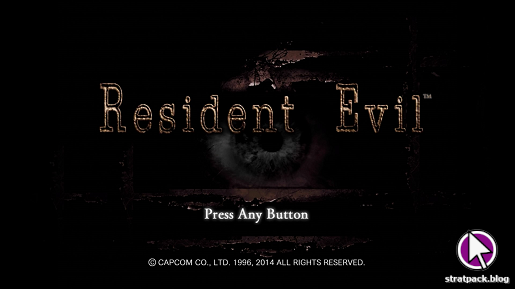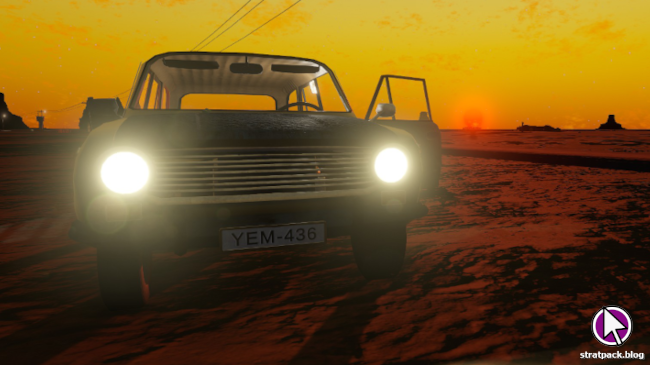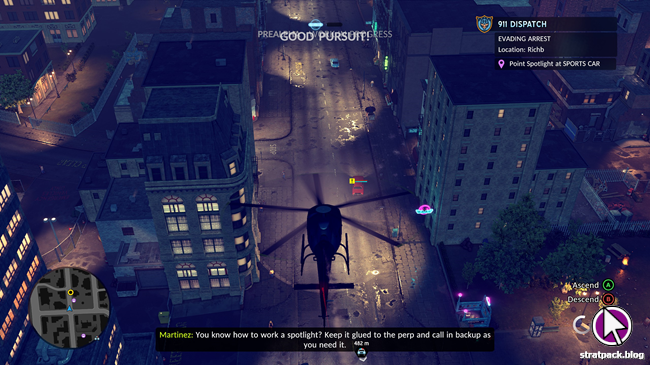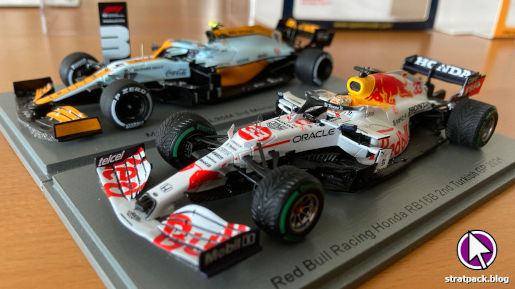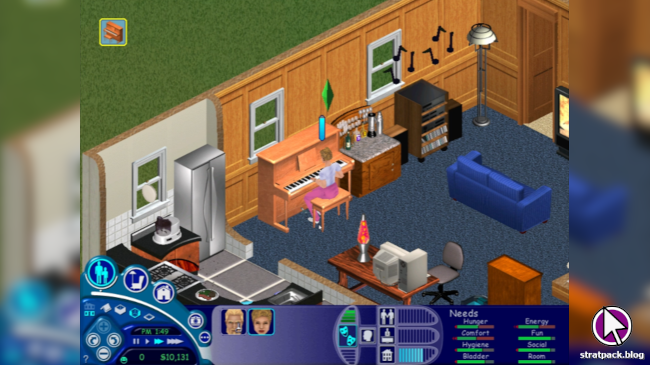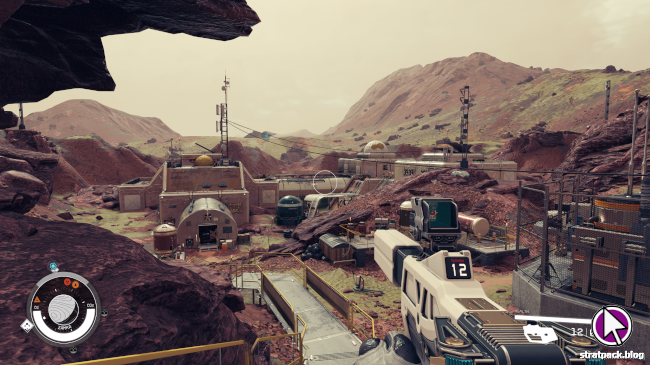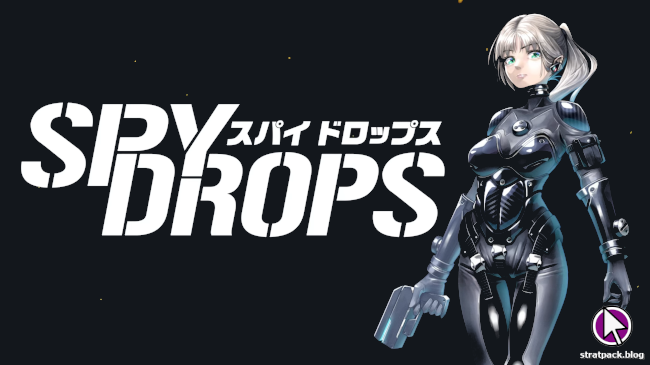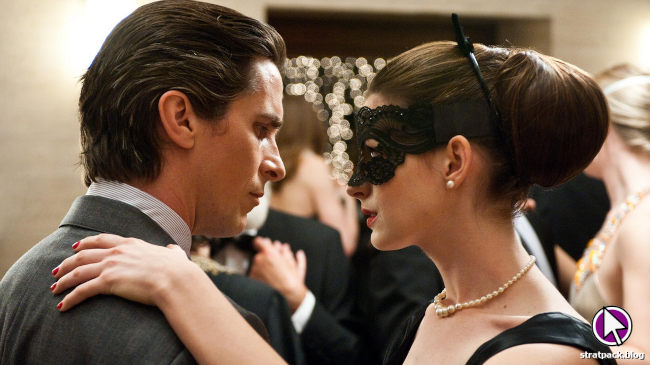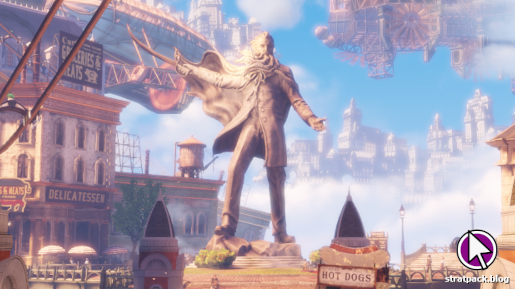
BioShock Infinite: Burial at Sea (PC) retrospective
I rarely bother with downloadable content. Most of the time I’m ready to put a game down by the time I finish the main story, and paying half the price for a fraction of the content doesn’t appeal to me. But when I heard that BioShock Infinite had a two-part supplement to its story that took players back into Rapture, I couldn’t resist giving Burial at Sea a go.
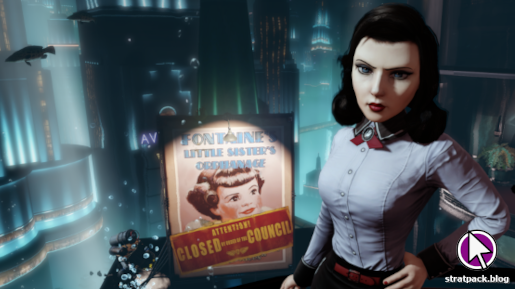
I wrote in my BioShock Infinite retrospective that if the first two games were about the city of Rapture, the trilogy’s conclusion was about the individuals connected to Columbia. This allowed for a more character-driven story, but I felt that overall the game lost part of what BioShock was, leaving behind the allure of Andrew Ryan’s city and the horror elements that kept you on edge.
Next up came Burial at Sea, a downloadable add-on campaign for Infinite that was released in two parts between 2013 and 2014. This new extension continues the story of Booker DeWitt and Elizabeth “Comstock”, but takes place predominantly in Rapture. And while it is not successful at everything it tries to do, by transplanting the more engaging characters of Infinite into the creepy corridors of an underwater metropolis on the brink provides some of the best BioShock segments ever, at least in short bursts.
Humble beginnings
Episode One is the lesser of the two in terms of both length and quality, and begins on New Year’s Eve in 1958. DeWitt, a private investigator, is hired by Elizabeth to find a girl named Sally. We exit our office, and we get something I’d always wanted – a chance to explore Rapture in the kind of thriving splendour that Columbia displayed for most of the main game.
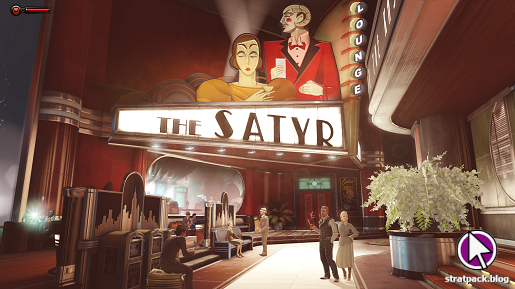
The game guides us past some familiar elements in their fully functional forms, which until this point we’ve only ever heard stories of. We use a fire plasmid to light Elizabeth’s cigarette, Little Sisters are being trained to do their grim jobs, and a waiter teleports around a bar like a Houdini splicer to take patrons’ orders. It really is fascinating to see how Rapture worked at its peak, blending mid-century style with its ominous superhuman technologies.
The highlight of our time in mainstream Rapture is an encounter with the neurotic artist Sander Cohen, who we’re told might know where Sally is. He says he’ll help if we dance so he can paint us, but when we do he shocks us and we wake up in a bathysphere on our way down to Fontaine’s department store, which Ryan has separated from the rest of the city and sunk to serve as a prison for Fontaine and his followers. Cohen tells us over the capsule’s radio that we will find Sally in the houseware department.
Rapid decay
From the moment we land in the lobby, this feels more like the Rapture we know. The store is decaying and creepy, and is populated by splicers. They aren’t quite as crazy as they will eventually be, and much of their speech parrots libertarian messages from Ryan’s propaganda. The sounds of the city are back too – from the demented dialogue enemies spout as they roam around to the Circus of Values vending machine jingle. It’s enough to keep you on your toes, peeking around each corner as you proceed.
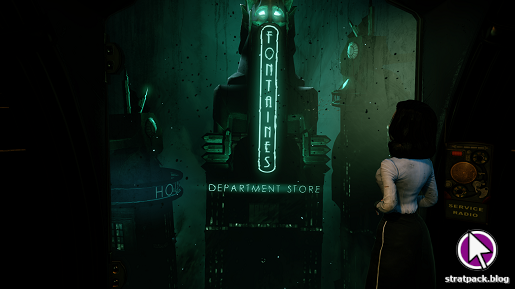
After picking up a new ice plasmid named Old Man Winter (located amongst some really nice store promotional displays), we see Sally climb into a vent in housewares. Splicers are trying to lure her out to harvest her ADAM, so after closing all but one of the exits Booker insists that we turn up the heat to flush her out. We do so, despite Elizabeth’s protests, but when she comes out of the exhaust we see that Sally has transformed into a Little Sister.
Sally calls for Mr Bubbles, her Big Daddy, to help. The fight that ensues is as prominent a collision of the two worlds as we get, with a particular favourite moment coming when I pitted the subnautical beast against a Motorised Patriot summoned through a tear by Elizabeth. Eventually the Big Daddy falls lifeless to the ground and we can turn our attention to Sally.
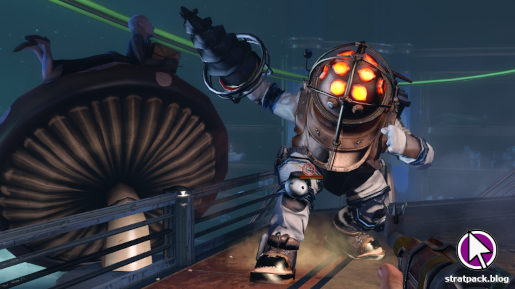
But here, at the finale of Episode One, comes Burial at Sea’s first big twist. When DeWitt tries to pull Sally out of the vent, he remembers his struggle with Anna at the tear - but from the wrong side. At this moment, Elizabeth calls us Comstock and berates us for trying to snatch Sally as we took her previously. On the bombshell that we’ve been playing as a post-Comstock DeWitt all this time, we’re impaled by a Big Daddy’s drill, and the first part ends as we fall to the ground and the screen fades to black.
Mixing it up
Episode Two begins in an idyllic Paris. We’re now playing as Elizabeth, and everyone says hello and offers compliments as we explore the streets. Then we catch a glimpse of Sally, and as we chase her everything falls apart. The city falls to ruins, and when we enter a door with Booker’s name on it we come face-to-face with the thermostat we used to crank up the heat on Sally. We turn around to Burial at Sea’s first jump scare – she’s right behind us in her creepy Little Sister form. It’s clear Elizabeth is wracked with guilt.
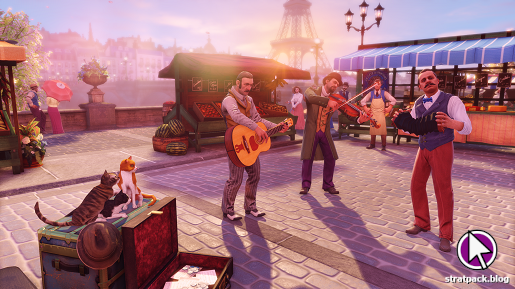
We wake to see Fontaine (as Atlas) and his men pulling Sally from the vent. A vision of Booker tells us to say we can get Fontaine back to Rapture, which suddenly gets his attention. On DeWitt’s advice we tell him that we are Suchong’s lab assistant and we can get him something valuable, so he lets us go. As we leave the Big Daddy fight arena we move some rubble to see our own corpse – Elizabeth was killed in the fight. The version of her we now play as has all her fingers and cannot open tears between worlds.
We leave and explore the Ryan the Lion Preparatory Academy, which is basically porn for BioShock fans. It’s full of material teaching children about the perils of communism and “parasites”, even to a level where there are boards encouraging them to identify freeloaders they’ve met, all led by the titular lion character, who is never seen without a cigarette in his mouth. The anti-nationalism and anti-religion messages stand in stark contrast to Columbia’s founding values, which we were surrounded by in the main game.
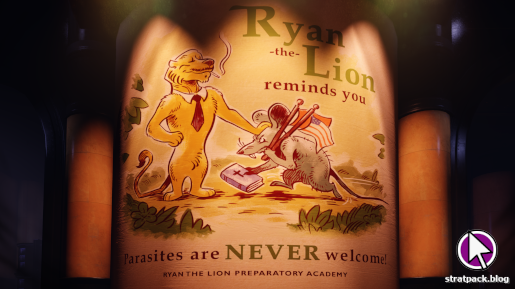
It’s immediately clear that Burial at Sea wants us to change our tactics. Episode One played much the same as Infinite, but Elizabeth is a lot weaker than Booker and must stick to the shadows to survive. She has guns, but ammo is scarce and one-hit stealth kills are more efficient. We pick up a little crossbow, and later we’ll get access to some nice toys like tranquiliser and gas darts and the Peeping Tom plasmid, which allows us to see enemies’ locations through walls and turn invisible for short periods.
Combined with environmental considerations (water in particular is noisy to walk through and prone to attracting attention - unfortunate in Rapture’s more run down areas), this produces some truly tense moments. It is greatly satisfying to perfectly time an approach – either by hiding behind a box or using the Sky-Hook to drop down behind your enemy – and clobber a splicer. Irrational Games has clearly gone to great lengths to differentiate Elizabeth from the series’ other player characters, and it pays off in abundance.
Taking to the skies
We creep around Rapture some more – including through a smutty theatre, which is a great location but gets very limited use – and eventually find our way to the lab belonging to Suchong, the developer of plasmids and the Big Daddy. He has a tear machine that’s broken, so we do some fetch quests to find the items required to repair it. We get confirmation here of how this fits into BioShock’s narrative, as we get one part from the heart of Fontaine’s operation, where his army of splicers talk about crashing New Year’s Eve.
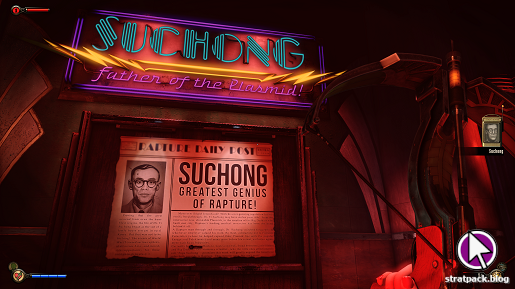
With the machine running, we open a tear to Columbia. Our goal is to acquire a special particle used to keep the city afloat, which we can use to lift the sunken department store to Rapture’s level and set Fontaine loose. Our travels through Comstock’s city yield some interesting tidbits – for example, we see that Jeremiah Fink and Suchong had been collaborating on their science projects, sharing notes on Big Daddies and Songbird, and see some evidence of Fink’s failed attempts to have it bond with a young Elizabeth.
But my biggest groan during Burial at Sea also came in this section, when we overhear the Lutece twins instructing Vox Populi leader Daisy Fitzroy to give Elizabeth no other choice but to kill her. “She must arrive a girl and leave a woman,” they say, promising this will be critical to the overall success of the uprising. This was hugely disappointing. I previously praised Fitzroy as one of a very few Infinite characters with some genuine complexity and moral ambiguity, and this moment retconned all of that away.
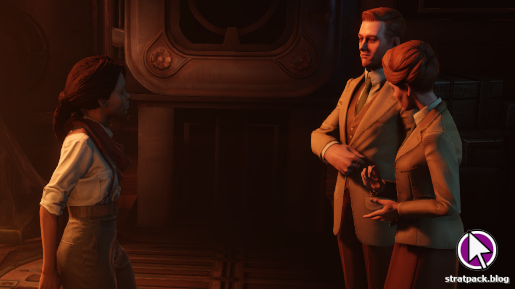
We get the particle and a hair sample (our own) that Suchong wanted, then return to Rapture. But just as Suchong is about to fulfil his end of the deal, Andrew Ryan intervenes. There’s a fantastically tense moment as he counts down the 60 seconds until his goons enter the room to deal with Elizabeth, and I really felt the terror of a vulnerable young woman about to face down an army. My only slight grievance here is that these are tough enemies, and you have to listen to his whole speech again every time you die.
Coming full circle
All hell is breaking loose outside as Fontaine’s uprising starts to gain momentum. We reach his office and use the particle to lift the building, which means Fontaine has his escape and needs to keep his end of the deal by handing over Sally. Unsurprisingly, he doesn’t, and instead drops his Atlas accent and tortures us to find out where his “ace in the hole” is. When he begins to threaten Sally, we have a vision of Booker and realise it is in Suchong’s lab, so it’s back out into Rapture for us to save Sally’s life.
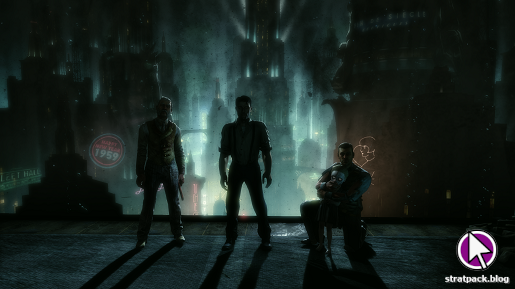
There’s a neat moment here where our path is blocked by an injured Big Daddy and his two worried Little Sisters. We learn from Suchong’s notes that he’s been struggling to build a bond between the two, but deduce that we can give their relationship a shot in the arm by having the Little Sisters give him ADAM. This in turn leads to Suchong’s death as the Big Daddy turns on him when he abuses the girls. This was unexpected and it was fantastic to see the world’s rules put to such clever use in the narrative when the designers could easily have just beefed up Suchong for another boss fight.
We grab the ace in the hole – a piece of paper – and deliver it to Fontaine, who promptly hits us over the head. As we drift back into consciousness he’s telling us that he doesn’t understand it. Our eyes focus on the page and we decrypt Suchong’s code, revealing three words: “Would you kindly”. Elizabeth has just delivered the phrase that will allow Atlas to order BioShock’s Jack around and swing the revolution in his favour – now he just needs to get him to Rapture. Sally, useless, is now set free, but before Fontaine departs he issues one more blow to Elizabeth, who dies slumped against the glass.
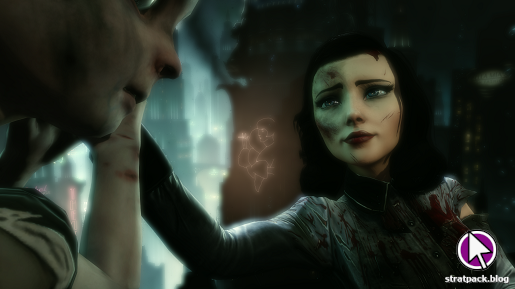
Burial at Sea started slow, but by the end I felt it had done enough both in terms of story and narrative to deserve its place as the last piece of the BioShock saga. Episode One meandered somewhat, but Episode Two did an excellent job – Fitzroy moment aside – of tying up the trilogy’s narrative in a way the was arguably needed after the slightly disjointed addition of Infinite.
It’s also worth reiterating on how different Episode Two was in terms of gameplay. If you’re going to make significant changes to your beloved series’ formula then the latter half of the final expansion is a brave place to do it, but putting the player in the shoes of the more fragile but lighter-footed Elizabeth was an inspired move that really leant into the first two BioShock games’ horror tendencies. This was missing from Infinite’s main campaign, but I was on edge for large parts of Burial at Sea as I snuck around Rapture’s shadowy corners trying to avoid detection by splicers.
If you’re a BioShock fan and, like me, your excitement for story-based games tends to tail off before the downloadable content arrives, I implore you to go back and play Burial at Sea. As well as a return to the creepy subnautical world of Rapture, it offers a satisfying denouement to the saga’s storyline and some of the trilogy’s best and most refined gameplay to boot.




